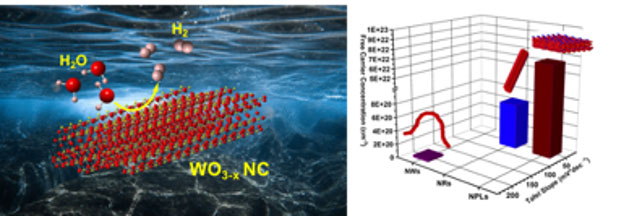Highly efficient heterogeneous electrocatalysts for hydrogen evolution reaction (HER) are mostly prepared with noble metal Pt and its alloy NCs. Although Pt-based catalysts display large current densities at low over potentials; its limited abundancy in the earth’s crust and high price greatly prohibit the potential applications for the large scale H2 production. Although extensive research has been carried out for the development of HER catalysts, the search for highly efficient and inexpensive heterogeneous electrocatalysts for HER is still ongoing. The heterogeneous catalytic systems are quite unique because the chosen electrochemical reactions mostly occur at the interface between multiple phases in which the NC-based solid surface carries the catalytically active reaction sites to control the overall performances. Importantly, factors such as surface facets, atomic arrangement at the edges, chemical composition at the surface can practically influence the catalytic efficiency. We are actively evaluating the HER catalytic efficiency of coordinatively unsaturated transition meat oxide (TMO) NCs, i.e., LSPR active NCs. We have determined that several structural and optoelectronic properties of TMOs controlled the HER activities including morphology (e.g., nanowires, nanorods, and nanoplatelets), defect sites, crystallographic planes, oxidation state of the metal, and the free carrier density of NCs. We are building fundamental knowledge on the structure-property-function relationships of plasmonic TMO NCs with unique shapes and LSPR properties. The overarching goal is to fabricate highly efficient electrode for hydrogen electrosynthesis from seawater electrolysis.
Electrocatalysis & Solar Fuels


